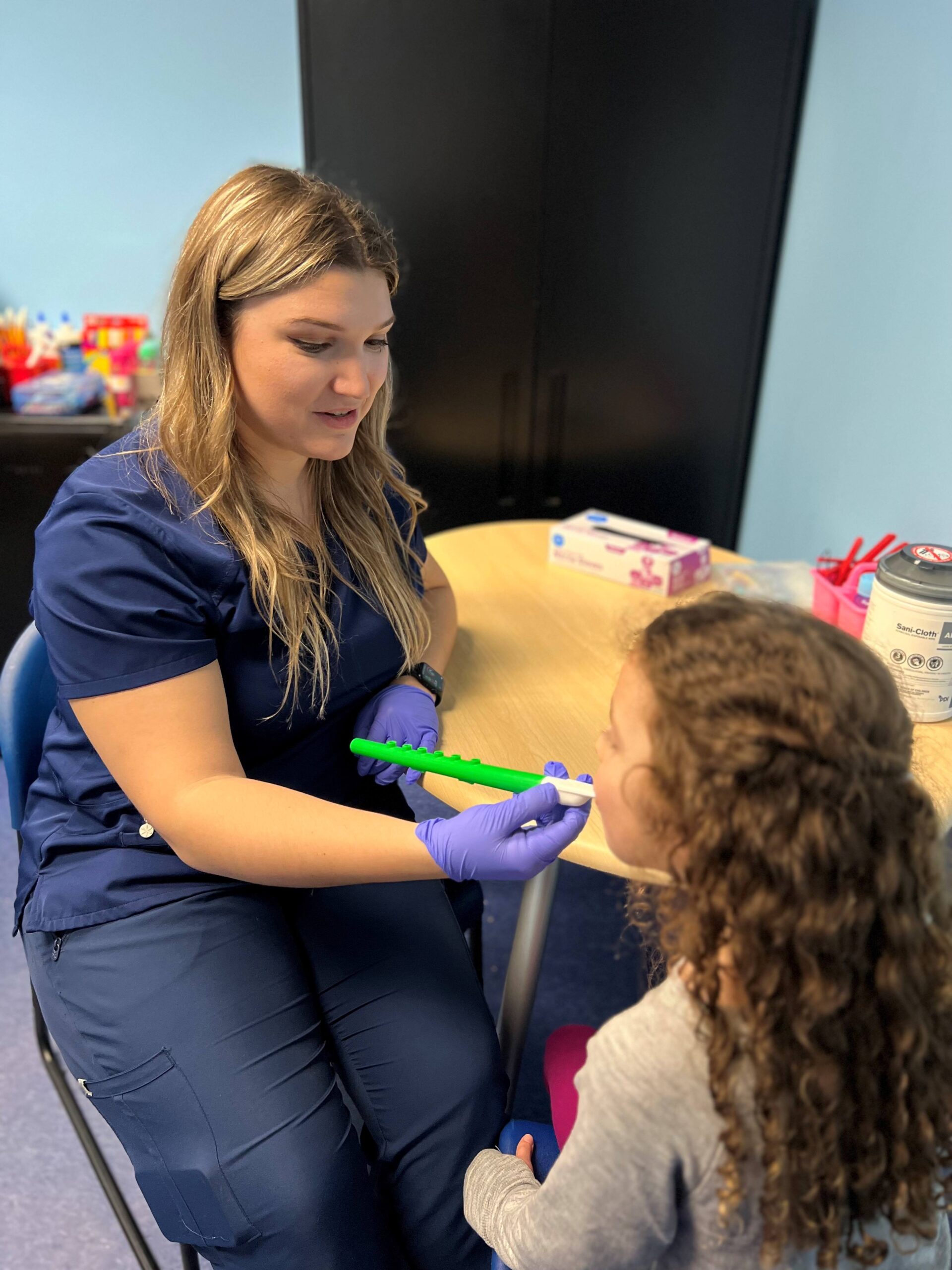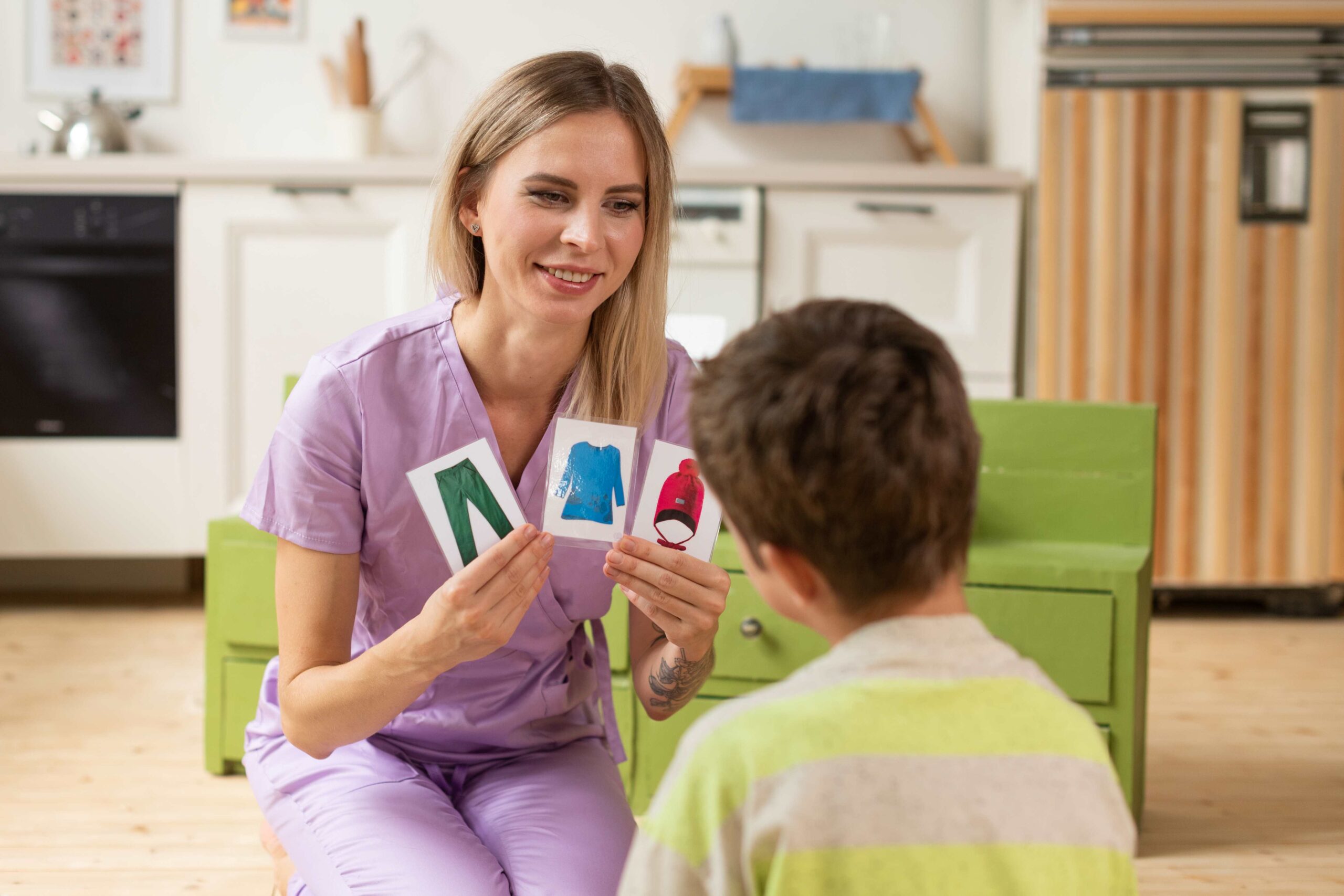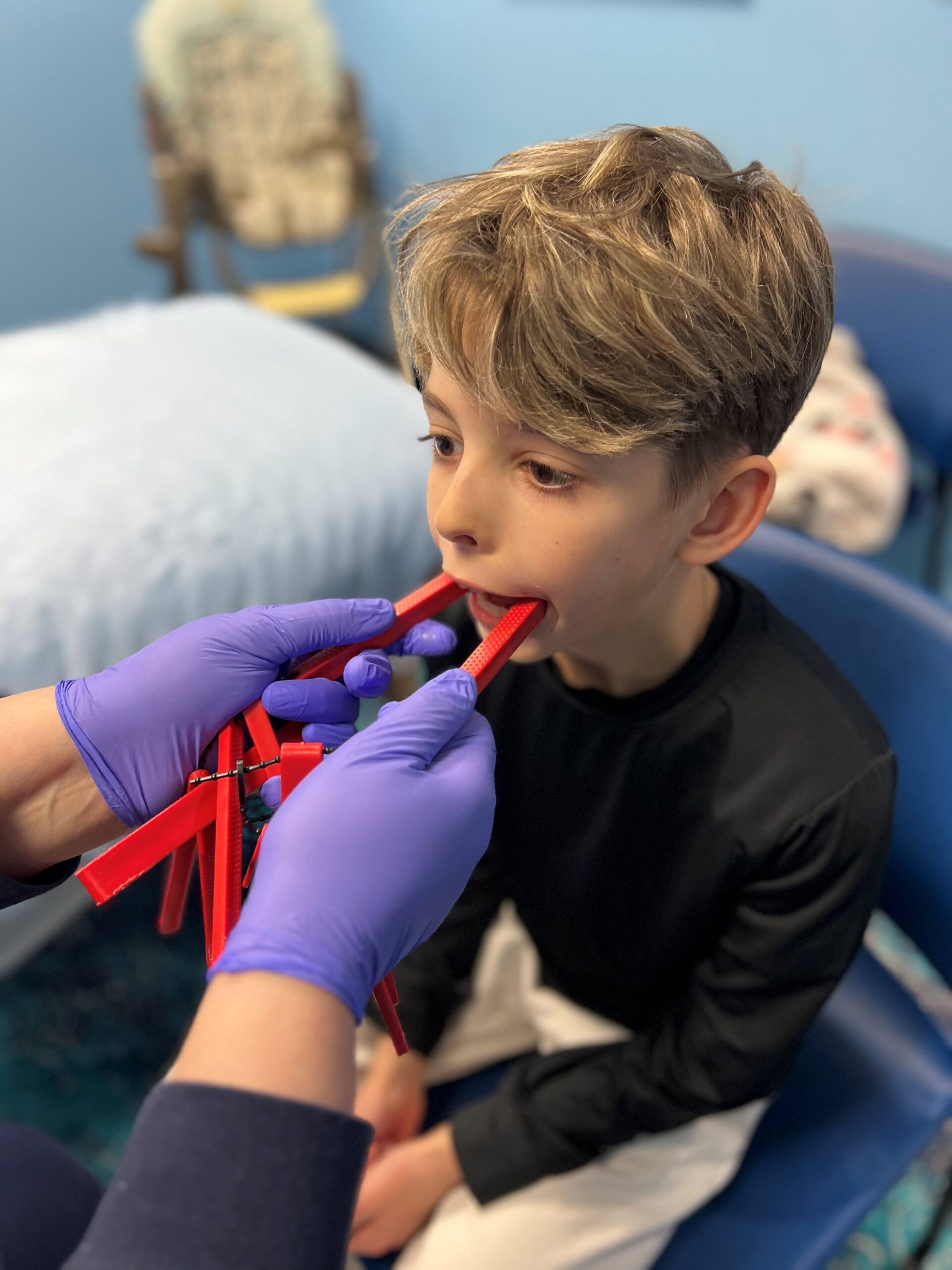When children struggle with speech and communication, it can be concerning for both parents and caregivers. Understanding the underlying issues and identifying when to seek professional help are key steps in supporting a child’s language development. There are a variety of speech disorders that can affect children, each with its own symptoms and challenges. The good news is that pediatric speech therapy with a licensed speech-language pathologist (SLP), like ours at Michigan Pediatric Therapy, can provide effective interventions to help children overcome these difficulties.
Let’s explore the most common speech disorders in children, how they impact communication, and how speech therapy plays a critical role in addressing these challenges. Whether you’re a parent, caregiver, or professional, this guide is designed to give you valuable insights into the world of pediatric speech therapy.

What Is a Speech Disorder?
A speech disorder refers to difficulties in producing speech sounds correctly or fluently. It also includes issues with voice quality that can interfere with communication. Speech disorders are different from language disorders, which relate to difficulties in understanding or using words to communicate ideas.
While many children experience some difficulty with speech as they learn to talk, a persistent speech disorder can affect their ability to communicate effectively. This can impact their social interactions, academic performance, and self-esteem.
Common Speech Disorders in Children
Childhood Apraxia of Speech (CAS)
Apraxia is a motor speech disorder where a child has difficulty planning and coordinating the movements needed for speech. In childhood apraxia of speech (CAS), the brain struggles to send the correct signals to the muscles used in speaking. This can result in inconsistent speech errors, difficulty pronouncing longer words, and trouble imitating sounds or words.
Signs of Apraxia:
- Difficulty pronouncing sounds consistently
- Challenges stringing sounds together to form words
- Struggling to imitate speech even though they understand the task
- Errors increase with longer, more complex words or phrases
How Speech Therapy Helps: For children with apraxia, speech therapy focuses on repetitive practice of speech movements and improving motor planning. Our SLPs will use techniques like visual, tactile, and auditory cues to help children form sounds and words more consistently. In some cases, augmentative and alternative communication (AAC) devices may be used to support the child’s communication.
Articulation Disorders
An articulation disorder occurs when a child has trouble making certain speech sounds correctly. Children with articulation disorders may substitute, omit, add, or distort sounds, making their speech difficult to understand.
Signs of an Articulation Disorder:
- Substituting one sound for another (e.g., saying “wabbit” for “rabbit”)
- Omitting sounds (e.g., saying “pay” for “play”)
- Distorting sounds (e.g., a lisp when trying to pronounce “s”)
- Speech is difficult to understand, especially for unfamiliar listeners
How Speech Therapy Helps: Our speech therapists work with children to improve their ability to produce sounds correctly. Therapy often involves sound repetition, sound modeling, and gradually building up from individual sounds to words and sentences. Articulation therapy is tailored to the specific sounds the child struggles with and aims to make their speech more clear and understandable.

Phonological Disorders
Signs of a Phonological Disorder:
- Consistent sound errors that follow a pattern (e.g., replacing all “k” sounds with “t” sounds, such as saying “tat” for “cat”)
- Difficulty with understanding and applying the rules for using sounds in words
- More complex speech challenges, especially as the child gets older
How Speech Therapy Helps: Therapy for phonological disorders focuses on teaching sound contrasts (e.g., the difference between “k” and “t”) and helping children understand how different sounds can change the meaning of words. Our speech-language pathologists will work with the child to reduce these patterns of errors and improve overall speech clarity.
Stuttering (Fluency Disorders)
Stuttering, or a fluency disorder, affects the flow of speech. Children who stutter may repeat sounds, syllables, or words, or they may prolong sounds. Stuttering can also involve silent blocks, where a child is unable to produce any sound. Stuttering tends to fluctuate, with some periods being more severe than others.
Signs of Stuttering:
- Repeating sounds, syllables, or words (e.g., “b-b-b-ball”)
- Prolonging sounds (e.g., “sssssssnake”)
- Pausing or blocking while trying to speak
- Visible frustration or tension when speaking
How Speech Therapy Helps: Speech therapy for stuttering often involves teaching children techniques to control the flow of speech, such as slow, relaxed speech, breath control, and smooth transitions between words. Therapy also focuses on building the child’s confidence in communicating and reducing anxiety around speaking.

Receptive and Expressive Language Disorders
While not a speech disorder in the strictest sense, language disorders affect a child’s ability to understand (receptive language) or express (expressive language) themselves. Children with receptive language disorders may have difficulty understanding spoken or written language, while those with expressive language disorders struggle to communicate their thoughts clearly.
Signs of Receptive and Expressive Language Disorders:
- Difficulty following directions or understanding questions
- Limited vocabulary or difficulty forming sentences
- Trouble retelling stories or events
- Difficulty answering questions or staying on topic in conversations
How Speech Therapy Helps: Speech therapy focuses on helping children improve their understanding of language and their ability to express themselves. For receptive language disorders, therapy may include following directions, identifying objects, or understanding stories. For expressive language disorders, our therapists work on building vocabulary, forming sentences, and improving conversational skills.

Voice Disorders
A voice disorder occurs when there are issues with the pitch, volume, or quality of a child’s voice. This can include hoarseness, breathiness, or a voice that is too high-pitched or too loud. Vocal nodules (small growths on the vocal cords) can also cause voice disorders.
Signs of a Voice Disorder:
- Hoarseness or breathiness that persists
- Voice that is too loud or too soft for the child’s age
- Straining or pain when speaking
- Loss of voice or frequent voice breaks
How Speech Therapy Helps: MPT’s speech therapists help children with voice disorders by teaching them vocal hygiene techniques, such as avoiding shouting or speaking at a comfortable volume. Therapy also focuses on improving the quality of the voice and addressing any underlying medical issues contributing to the disorder.
When Should You Seek Help?
Parents and caregivers often wonder when it’s time to seek help from a speech therapist. While every child develops at their own pace, there are certain red flags that could indicate the need for professional evaluation.
By 12 months:
By 18 months:
By 2 years:
By 3 years:
By 4-5 years:
Persistent speech errors, difficulty with forming sentences, or struggles with speech fluency.
If you notice any of these signs, it’s a good idea to talk to your child’s pediatrician and consult with a speech-language pathologist. Early intervention is key to helping children overcome speech and language delays, as their brains are still highly adaptable during the early years.

How Speech Therapy Can Help
Speech therapy plays a crucial role in addressing a variety of speech and language disorders in children. Michigan Pediatric Therapy’s speech-language pathologists will assess the child’s specific needs, identify the type of disorder, and create a customized therapy plan to improve communication skills. Therapy sessions typically involve play-based activities that engage the child while working on specific goals.
Parents and caregivers are also an important part of the process. Our speech therapists will provide guidance on how to support your child’s speech and language development at home, giving you tools to continue progress outside of therapy sessions.
Conclusion
Understanding common speech disorders in children is the first step in supporting your child’s communication journey. Whether your child is struggling with articulation, stuttering, or apraxia, pediatric speech therapy can provide the tools and support they need to improve their speech and language skills.
If you’re concerned about your child’s speech or language development, don’t hesitate to seek professional help and give us a call: (248) 939-4030. Early intervention can make a world of difference in helping your child overcome their communication challenges and thrive.
Michigan Pediatric Therapy
📍 27655 Middlebelt Rd., Suite 130, Farmington Hills, MI 48334
📞 (248) 939-4030
🌐 mipediatrictherapy.com



